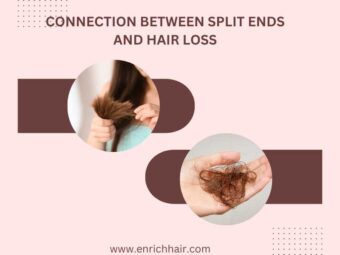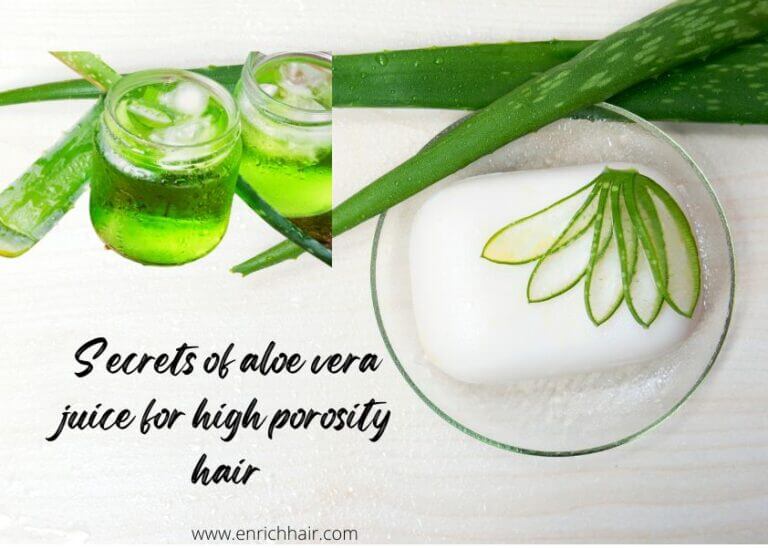Do Split Ends Cause Hair Loss
Table of Contents
Picture your hair as a storybook, each strand holding tales of your unique journey. Now, think of split ends as tiny rips in the pages of that book. Today, we’re on a quest to uncover a simple yet puzzling question: Can these splits really make your hair fall out? Forget complicated terms and come along as we explore the world of hair, looking for clues about why split ends happen and if they’re more than just a little hair trouble. Together, we’ll learn how to keep our hair stories vibrant, free of those sneaky split-end interruptions!
Understanding Split Ends

-
Definition of Split Ends
Let’s keep it simple: Split ends are like little cracks at the end of your hair. They happen when the tips split into two or more parts. Imagine your hair as a smooth rope, and split ends are like frayed ends that can make it look a bit messy.
-
Causes of Split Ends
Now, why does this splitting happen? It’s often because of everyday things we do to our hair. Using hot tools a lot, not protecting our hair from the sun, or using harsh chemicals—these are common causes. Even brushing your hair when it’s wet can contribute. So, in this section, we’ll uncover why our hair sometimes decides to split into two!
-
Types Of Split Ends

Here are different types of split ends.
Single Split End (Classic Split):
-
- Description: The hair strand splits into two at the end.
- Visual: Looks like a fork with two separate tips.
Fork in the Road:
-
- Description: Similar to the single split, but one of the splits further divides, creating a “Y” shape.
- Visual: Resembles a fork with three branches.
Feather Split Ends:
-
- Description: Multiple small splits along the hair strand, giving it a feathery appearance.
- Visual: Like tiny branches extending from the main strand.
Notched Ends:
-
- Description: The end of the hair strand looks like it has a V-shaped notch.
- Visual: Appears as a small “V” cut into the tip.
Tree Branch Ends:
-
- Description: Multiple splits, create a branching effect similar to tree branches.
- Visual: Resembles a small tree with branches at the hair tip.
Miniature Knots:
-
- Description: Hair strands twist and knot at the end.
- Visual: Looks like small, twisted knots on the hair tips.
The Hair Growth Cycle

Anagen, Catagen, and Telogen Phases
Alright, let’s talk about the life of your hair. It’s like a cycle with three main parts:
- Anagen Phase: This is the active growth phase, where your hair is happily growing. It can last for years, and the longer it stays in this phase, the longer your hair can get.
- Catagen Phase: Here, your hair takes a little break. It’s not growing anymore, but it’s not falling out just yet. This phase is like a quick pit stop in the hair growth journey.
- Telogen Phase: This is the rest phase. Your hair is getting ready to say goodbye and make room for new hair. After a while, it falls out, and a new strand starts the whole cycle again.
How Split Ends Affect Each Phase
Now, let’s see how split ends sneak into this cycle:
- Anagen Phase: Split ends can make the growing hair weaker, and more prone to breakage. So, even though it’s trying to grow, it might snap before reaching its full potential.
- Catagen Phase: During this short break, if your hair has split ends, it might turn into more significant damage. It’s like taking a small problem and letting it get bigger.
- Telogen Phase: If your hair is already weakened with split ends, it might fall out prematurely during this resting phase. Healthy hair tends to stick around longer.
Dispelling Common Myths
-
Do Split Ends Cause Hair Loss?
Let’s get real about a common belief: the idea that having split ends automatically means you’re losing hair. Well, it’s time to bust that myth! Having split ends doesn’t necessarily lead to hair loss for everyone. While split ends can make your hair look a bit rough and might contribute to breakage, it doesn’t mean you’re losing all your strands.
Think of it like this: having a chipped nail doesn’t mean you’ll lose your whole finger. In the same way, having split ends might require a trim to keep your hair healthy, but it doesn’t spell disaster for your entire mane
Effects of Split Ends on Hair Health
-
Impact on Hair Texture and Appearance
Let’s talk about how split ends can influence the way your hair looks and feels. When those ends start to split, it’s like tiny fractures in the smoothness of your strands. This can make your hair texture feel rough and give it a frayed appearance. In this section, we’ll delve into the visual and tactile effects of split ends, helping you understand how they can alter the overall look and feel of your locks.
-
Relationship to Breakage
Now, let’s explore how split ends and hair breakage go hand in hand. When your hair is already weakened by splits, it becomes more susceptible to breaking. Picture it as weakened links in a chain – the more splits you have, the easier it is for your hair to snap. We’ll dissect this relationship, explaining why addressing split ends is not just about aesthetics but plays a crucial role in preventing unwanted breakage and maintaining the strength of your tresses.
Connection Between Split Ends and Hair Loss

Research suggests that while split ends themselves may not directly cause hair loss, they can significantly contribute to overall hair damage and breakage, indirectly influencing the health of the hair. When hair strands develop split ends, they become structurally compromised. This structural compromise makes the hair more susceptible to breakage, especially during daily activities like brushing or styling.
Studies indicate that the weakened state of hair with split ends can lead to increased fragility and a higher likelihood of breakage along the hair shaft. While the broken strands may not always result in immediate and noticeable hair loss, the cumulative effect over time can lead to a reduction in hair density and volume.
Furthermore, the presence of split ends can create a cycle of damage. If not addressed, split ends may travel upward, causing further breakage and potentially impacting the overall health of the hair follicles. By understanding and addressing split ends, individuals can contribute to preventing excessive breakage, thereby promoting healthier and fuller-looking hair. It’s essential to consider these insights from research when developing strategies for maintaining optimal hair health.
Preventing and Treating Split Ends
To address a commonly searched concern: do split ends cause hair loss? The short answer is no; split ends do not directly cause hair from the scalp to fall out. However, they are indicative of weakened hair that is more prone to breakage. While split ends in themselves are not responsible for hair loss from the scalp, they can lead to shorter hair lengths due to breakage near the ends. Here are some commom practices to prevent and treat split ends.
- Gentle Washing: Use a sulfate-free shampoo to clean your hair without stripping away its natural oils. Gentle
- Conditioning Routine: Regularly use a nourishing conditioner to keep your hair hydrated and manageable.
- Wide-Toothed Comb: Use a wide-toothed comb, especially when your hair is wet. Wet hair is more prone to breakage, and a wide-toothed comb helps detangle without causing stress on the strands.
- Protective Hairstyles: Consider wearing protective hairstyles that keep your hair secure and minimize exposure to environmental stressors, reducing the likelihood of split ends.
- Regular Trims: Schedule regular trims every 6-8 weeks to remove split ends and prevent them from traveling up the hair shaft. This proactive approach supports healthier hair growth.
- Silk Pillowcases: Sleep on a silk or satin pillowcase to reduce friction and minimize the risk of split ends caused by rubbing against rough fabrics.
- Hydration: Drink an adequate amount of water to maintain hair hydration from the inside out. Well-hydrated hair is less prone to dryness and breakage.
- Protecting from Sun and Harsh Weather: Shield your hair from prolonged sun exposure and harsh weather conditions by wearing hats or scarves. UV rays and extreme weather can contribute to hair damage and split ends.
Hair Loss Conditions

Understanding Types of Hair Loss
Discover the world of Alopecia Areata, an autoimmune disorder causing unpredictable hair loss; delve into the common Male Pattern Baldness (Androgenetic Alopecia), affecting almost 50% of men over the age of 50; investigate Telogen Effluvium, a condition often triggered by severe stress or major surgery causing temporary hair thinning. Gain knowledge about Traction Alopecia, which is a result of pulling hair into tight hairstyles, and learn about the rare Cicatricial Alopecia which destroys hair follicles replacing them with scar tissue.
A thorough understanding of these conditions can pave the way toward effective prevention and treatment strategies. of the hair become frayed due to lack of moisture or physical damage. While they are a nuisance and can lead to shorter hair over time due to breakage
Understanding Contributing Factors

When it comes to hair loss, various factors can play a role. Understanding these contributing elements is key to addressing and managing the condition effectively. Let’s explore some of the common factors that can influence hair health:
- Genetics: Family history plays a significant role in determining the likelihood of hair loss. If your parents or grandparents experienced it, you may be more prone to certain types of hair loss.
- Hormonal Changes: Fluctuations in hormones, such as during pregnancy, childbirth, menopause, or thyroid imbalances, can contribute to hair loss. Hormonal shifts affect the hair growth cycle.
- Medical Conditions: Certain medical conditions, like autoimmune disorders, diabetes, and lupus, can impact hair health. Managing these underlying health issues is crucial for preventing associated hair loss.
- Stress and Emotional Well-being: High stress levels or traumatic events can lead to a condition called telogen effluvium, causing excessive shedding. Emotional well-being is closely linked to hair health.
- Hairstyling Practices: Overuse of heat styling tools, tight hairstyles, and chemical treatments can damage the hair shaft and contribute to hair loss, especially in conditions like traction alopecia.
Conclusion
The direct answer is that split ends themselves do not cause hair loss from the scalp. However, they contribute to hair breakage, which can significantly weaken the hair and make it appear thinner and shorter over time. In other words, while split ends are not responsible for hair falling out from the root, they lead to the shortened length of the hair due to breakage.
Frequently Asked Questions
Can split ends be a sign of underlying hair problems?
Yes, excessive split ends may be indicative of overall hair health issues, such as dryness, damage, or insufficient care.
Is it necessary to cut off all split ends immediately?
It’s not always necessary to cut off every split end immediately. However, regular trims are essential to prevent further damage and maintain healthy-looking hair.
Can split ends be a result of a medical condition?
While split ends are often caused by external factors, certain underlying health conditions or nutritional deficiencies can contribute to hair problems.
Can split ends be fully repaired?
While split ends cannot be fully repaired, they can be temporarily improved with hair care treatments and products. The best prevention is regular trimming and a healthy hair care routine.







